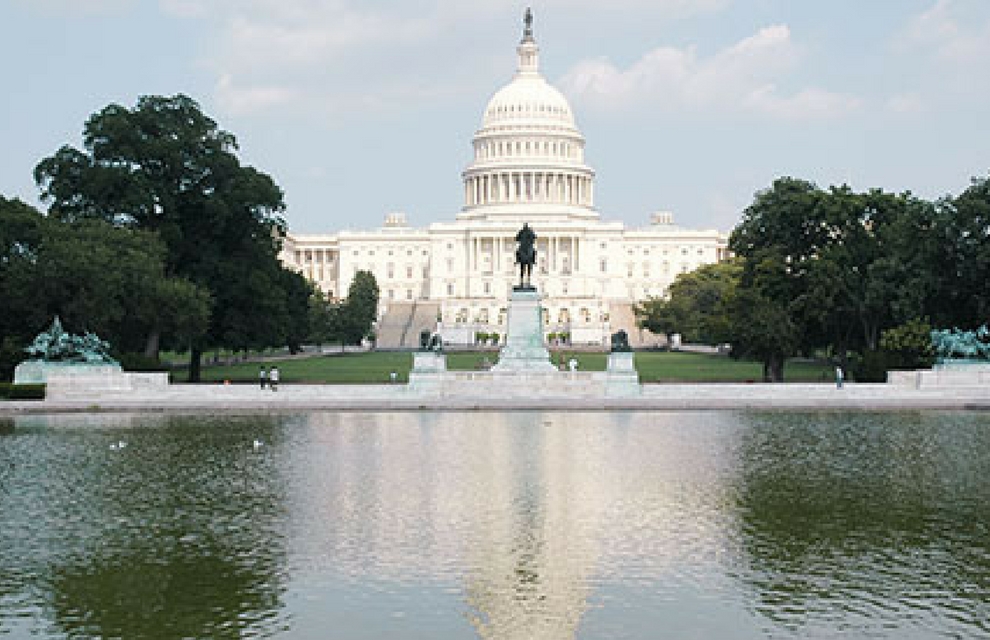New rules mean changes for US GSIBs, says Todd Zerega
31 October 2017 Washington DC
 Image: Shutterstock
Image: Shutterstock
The US Board of Governors of the Federal Reserve System’s final rule on global systemically important banks (GSIBs) to foreign GSIB exposures will mean banks will probably need to amend their trading documentations, according to Todd Zerega, a partner at law firm, Perkins Coie.
In a buy-side overview guide, Zerega discussed the contractual provisions that need to be considered by US buy-side financial institutions concerning the final rule, which was announced in September.
Zerega stated that the final rule will affect contractual default rights for qualified financial contracts (QFCs), including repo and securities lending contracts, as well as derivatives and reverse repo.
This means banks will “likely” have to amend their trading documentation, with various exceptions.
Firstly, if all parties to a covered QFC adhere to the International Swaps and Derivatives Association (ISDA) 2015 Universal Resolution Stay Protocol, this constitutes compliance.
Also, a covered QFC does not have to conform with contractual requirements under the final rule if all parties, other than the covered entity, are based in the US; is governed by the US; or does not explicitly prove that any of the US special resolution regimes are excluded from QFC rules.
Zerega explained: “Accordingly, a US-domiciled mutual fund with a repo or ISDA agreement with a US GSIB that is governed by US law and does not explicitly exclude a US special resolution regime would not have to be amended.”
According to the Feds new rule, any US top-tier bank holding company, identified by the board as a GSIB, would be subjected to restrictions regarding the terms of their non-cleared QFCs.
The final rule enables a GSIB subsidiary to enter into a master securities lending arrangement with a foreign bank as agent for a US-based pension fund.
The report, released upon the announcement of the final rule, stated: “The GSIB would document its role as agent for the pension fund, and would generally provide its customer a securities replacement guarantee or indemnification for any shortfall in collateral in the event of the default of the foreign bank.”
The final rule also “amends certain definitions in the board’s capital and liquidity rules”.
This means that the new rule will “ensure that the regulatory capital and liquidity treatment of QFCs, to which a covered entity is party, is not affected by the final rule’s restrictions on such QFCs”.
The final rule will apply to Bank of America, BNY Mellon, Citigroup, Goldman Sachs, J.P. Morgan, Morgan Stanley, State Street and Wells Fargo.
The report said the final rule is safeguarding against a repetition of the 2007–2009 financial crisis and the recession it ensued.
Although securities lending was not a direct cause of the crash, the sector gained a degree of attention in the aftermath because of its loose association with shadow banking.
In a buy-side overview guide, Zerega discussed the contractual provisions that need to be considered by US buy-side financial institutions concerning the final rule, which was announced in September.
Zerega stated that the final rule will affect contractual default rights for qualified financial contracts (QFCs), including repo and securities lending contracts, as well as derivatives and reverse repo.
This means banks will “likely” have to amend their trading documentation, with various exceptions.
Firstly, if all parties to a covered QFC adhere to the International Swaps and Derivatives Association (ISDA) 2015 Universal Resolution Stay Protocol, this constitutes compliance.
Also, a covered QFC does not have to conform with contractual requirements under the final rule if all parties, other than the covered entity, are based in the US; is governed by the US; or does not explicitly prove that any of the US special resolution regimes are excluded from QFC rules.
Zerega explained: “Accordingly, a US-domiciled mutual fund with a repo or ISDA agreement with a US GSIB that is governed by US law and does not explicitly exclude a US special resolution regime would not have to be amended.”
According to the Feds new rule, any US top-tier bank holding company, identified by the board as a GSIB, would be subjected to restrictions regarding the terms of their non-cleared QFCs.
The final rule enables a GSIB subsidiary to enter into a master securities lending arrangement with a foreign bank as agent for a US-based pension fund.
The report, released upon the announcement of the final rule, stated: “The GSIB would document its role as agent for the pension fund, and would generally provide its customer a securities replacement guarantee or indemnification for any shortfall in collateral in the event of the default of the foreign bank.”
The final rule also “amends certain definitions in the board’s capital and liquidity rules”.
This means that the new rule will “ensure that the regulatory capital and liquidity treatment of QFCs, to which a covered entity is party, is not affected by the final rule’s restrictions on such QFCs”.
The final rule will apply to Bank of America, BNY Mellon, Citigroup, Goldman Sachs, J.P. Morgan, Morgan Stanley, State Street and Wells Fargo.
The report said the final rule is safeguarding against a repetition of the 2007–2009 financial crisis and the recession it ensued.
Although securities lending was not a direct cause of the crash, the sector gained a degree of attention in the aftermath because of its loose association with shadow banking.
NO FEE, NO RISK
100% ON RETURNS If you invest in only one securities finance news source this year, make sure it is your free subscription to Securities Finance Times
100% ON RETURNS If you invest in only one securities finance news source this year, make sure it is your free subscription to Securities Finance Times



